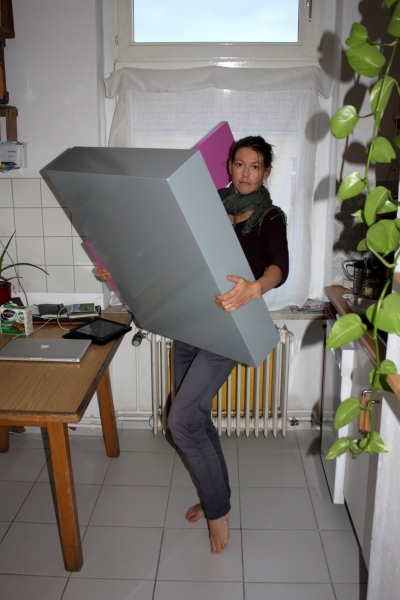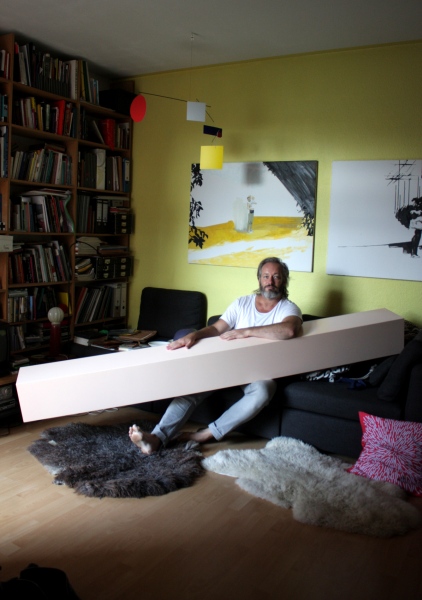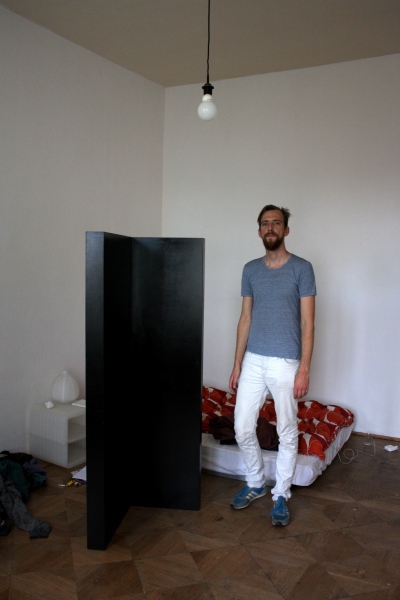FORMEN FORMEN, 2015
Premiere: Sophiensäle 23.01.15
Choreografie / Skulptur: Julian Weber
Performance: Nik Haffner, Hermann Heisig, Peter Pleyer, Meg Stuart Claudia Tomasi
Sound: Els Vandeweyer, Brendan Dougherty
Licht: Annegret Schalke, Vìctor Fernàndez De Tejada
Produktion: Elisa Ricci
In FORMEN FORMEN arbeitet der Choreograf und Bildende Künstler Julian Weber mit einer Gruppe von 5 Tänzern/innen an einem Interaktionsraum von Körpern und Material.
Vor Beginn der Probenarbeit fertigt er individuell für jede/n Tänzer/innen eine Skulptur an. Mit diesem Objekt oder diesem „Gegenüber“ verbringt jede/r zwei Monate in ihrem/seinem privaten Raum und lässt ihn Teil ihres/seines Alltags werden. Während dieser Zeit entwickelt jeder Performer einen 1-minütigen Tanz in Bezug auf seine/ihre persönliche Skulptur.
Die entstehenden Tänze, in die sich die Objekte, die spezifische Körperlichkeit der Akteur/innen und auch ihre Privaträume einschreiben, dienen als Ausgangspunkt für die Erarbeitung der Choreografie.
FORMEN FORMEN beschäftigt sich mit der Gegenüberstellung von Objekt und Mensch und den Möglichkeiten einer wechselseitigen Formung: Wer bewegt wen? Inwiefern verschiebt sich im Aufeinandertreffen von Mensch und Skulptur auf der Bühne die Grenze zwischen Körper und Ding? Was ist ein Körper, wo beginnt er und wo hört er auf? Wer ist Akteur? Wer ist handlungsfähig?
In FORMEN FORMEN the choreographer and visual artist July Weber gathers 5 dancers from different generations and diverse backgrounds to work on a space of interaction between body and material. The work focuses on the juxtaposition of object and human being and on the possibility of mutual shaping. What is a body? Where does it start and where does it end? Who is actor? Who is capable of acting?
Before the rehearsal time, Julyn Weber designed a personal sculpture for each dancer. The dancers spend several months with their personal object or „counterpart“ in their private space and let it become part of their everyday life. During this period of time all dancers develop a 1-minute dance related to their personal sculpture. In the creation of these dances the detour through the object plays a central role. It is less about a self-representation of the dancers, but rather a visibility and presence which happens through the interaction with the interposed object. The objects, the specific physicality of the dancers, as well as their private space are inscribed in the dances. These serve as starting points for the development of the choreography, which deals with questions concerning the positioning of the body as a medium between the ephemerality of dance and the durable materiality of the object.
julywebercontact@gmail.com




